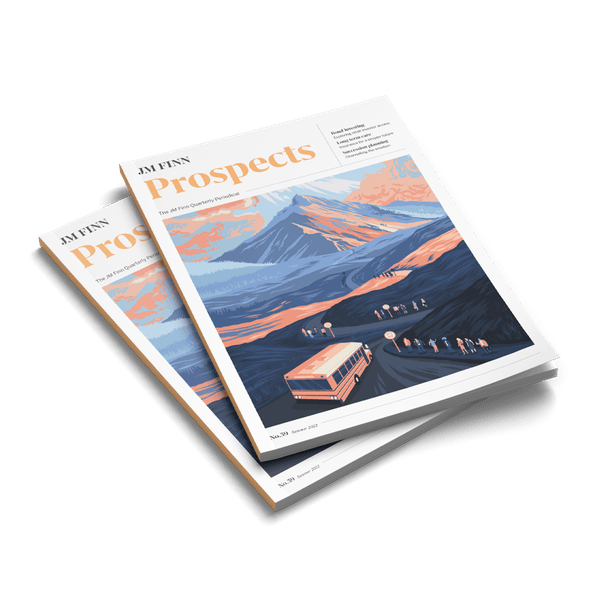Amazon
Price $2,404.19
52 week high-low $3,773.08 – $2,025.20
Net Yield 0.00%
Hist/Pros PER 36/60
Equity Market Cap (M) $1,223,060
Consumer Discretionary
Dave Fildes, Head of Investor Relations
There seems little doubt that the pandemic proved to be a boon for Amazon’s retail business as new and existing consumers flocked online to purchase all manner of goods whilst stuck at home. But that growth hasn’t come without growing pains. During the pandemic, Amazon reached capacity constraints within their warehousing and delivery networks. This drove up the retail business’ profitability as asset utilisation reached peak levels. Yet, facing high levels of retail revenue growth, Amazon consciously sought to invest ahead of longer term ecommerce growth. For context, Amazon’s fulfilment capacity doubled from 2019 to 2021, an impressive feat for a company that already offered a market leading delivery proposition for customers pre-pandemic.
However, fundamentally this space growth has added higher fixed costs to operating expenses at a time when consumers are easing back on purchases of goods vs. services. Near term operating results have taken the brunt of this dynamic; the retail business has shifted back into an operating loss position.
A potential risk for investors is whether Amazon miss-stepped and over expanded based upon forecasting forward from an unsustainable point of peak goods demand. Equally, herein may rest an opportunity for longer term patient investors. Amazon now has space from which to grow as others are scrambling to build warehouse space; they can reduce reliance on more costly external delivery providers and rebuild their operating margin if they can find efficiency gains across their enlarged distribution asset base.
ASML
Price €536.00
52 week high-low €777.50 – €486.30
Net Yield 1.03%
Hist/Pros PER 37/33
Equity Market Cap (M) €216,732
Information Technology
Peter Wennink, CEO and Roger Dassen, CFO
ASML is a leading manufacturer of lithography tools which are crucial to the production of semiconductor chips and therefore all electronic devices. We attended a meeting with CEO Peter Wennink and CFO Roger Dassen where the tone was positive with management’s commentary pointing to upside for 2023 market expectations and beyond. The majority of questions were around assessing the sustainability of demand, both near and medium term, in the context of cyclicality of the semiconductor industry and the structural outlook for lithography.
They maintained they are on track to deliver c.20% revenue growth in 2022. They reiterated that they are not seeing demand slow down and stated that demand does indeed exist for greater shipments of lithography tools. ASML is however constrained by capacity and supply chain issues, meaning that the order backlog in 2023 continues to grow. Management demonstrated confidence in the outlook for 2025 and beyond, citing increased demand for their leading technology (e.g. high performance computing) and mature technologies (e.g. automotive and internet-of-things). Additionally, with Moore’s Law (the observation that the number of transistors per silicon chip doubles every two years) continuing, but at a slower pace, chip sizes are having to become bigger, which is increasing lithography intensity.
ASML has not escaped the effects of cost inflation. 2022 gross margin is now expected to be 52%, down from the previously expected 53%. Yet, management say they are engaged with customers on how to pass on certain cost items, meaning some costs may be recovered over time.
BT Group
Price £1.87
52 week high-low £2.07 – £1.35
Net Yield 1.22%
Hist/Pros PER 14/9
Equity Market Cap (M) £18,832
Communication Services
Mark Lidliard, Director of Investor Relations
We met with Mark Lidliard, Director of Investor Relations at BT. The focus of much of the meeting was on Openreach, an underappreciated part of BT’s business which accounts for c.40% of group adjusted operating profit before depreciation and amortisation (EBITDA). Openreach is a separate, but wholly-owned customer facing unit which is operationally independent.
The big near term story is the roll out of fibre optic cable. For Openreach this means elevated short term capital expenditure. However, Mark ran us through how capex spend will peak in FY24 and trend down to much lower levels in FY31 as the fibre roll out completes. This, BT hope, will be combined with increased average revenue per user (ARPU) growth as customers transition onto fibre and away from their legacy copper cable. ARPU has historically grown as fibre penetration in their customer base has increased and BT expect this to continue. The final piece in the puzzle is operational expenditure which should trend downwards as fibre optic cable is less expensive to run due to lower fault rates. This means the margin is expected to expand. All of the above factors, Mark explained, should feed through to solid free cash flow growth out to FY28 and beyond.
Competition does however present headwinds. The other big fibre player is Virgin, but there are also a host of smaller so called ‘over-builders’ trying to roll out fibre networks which add competitive pressure. Mark argued that these loss making over-builders will soon see cheap funding dry up, resulting in consolidation, which should benefit Openreach. The competitive outlook remains uncertain but Openreach is likely to see more investor focus in coming years.
CONSUMER DISCRETIONARY Nike
LVMH
Starbucks
COMMUNICATION SERVICESTencent Holdings
Vodafone
ENERGYBP
Shell
FINANCIALSBarclays
Schroders
HSBC
HEALTH CAREDechra Pharmaceuticals
Genus
AstraZeneca
Sonova
INDUSTRIALSExperian
BAE Systems
Ceres Power
INFORMATION TECHNOLOGYPayPal
ASML
Apple
MATERIALSGivaudan
American Airlines
DS Smith
Croda
REAL ESTATEBritish Land,
Home REIT
Michael Bray, CFA, Research Analyst
James Ayling, CFA, Research Analyst
Henry Birt, Research Assistant




